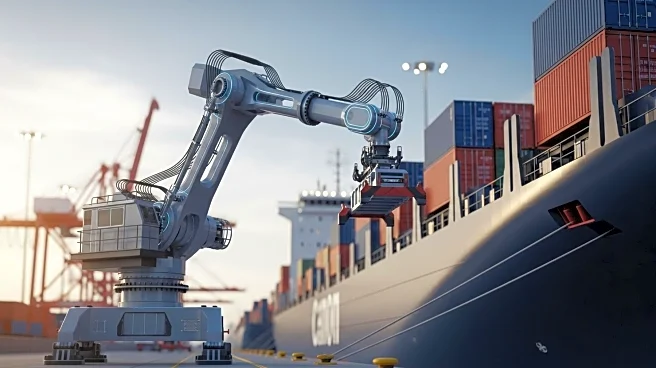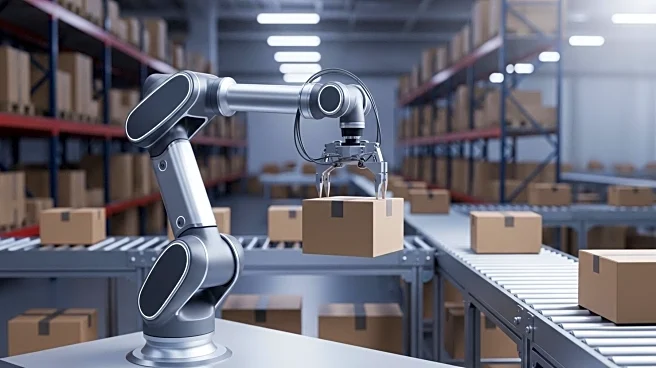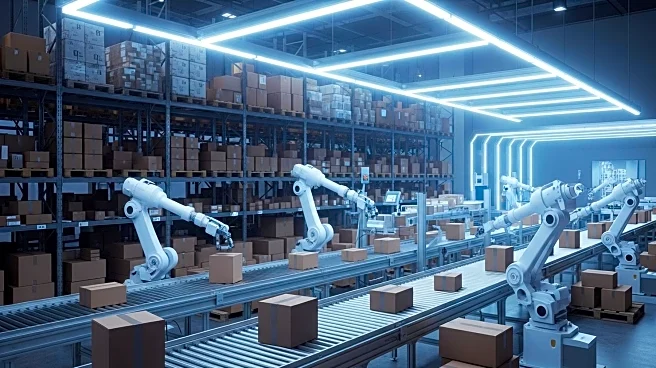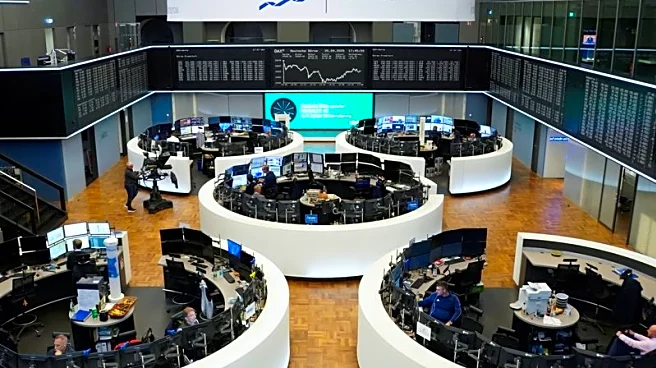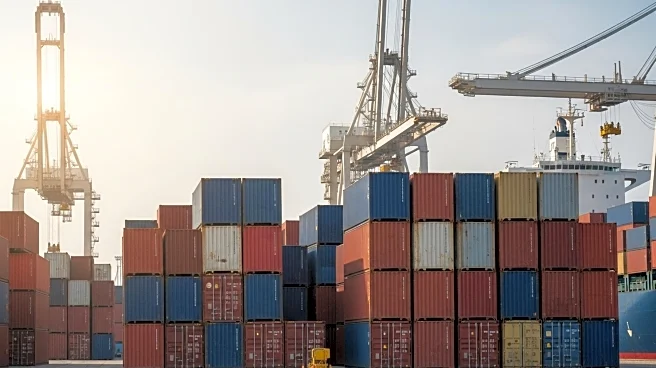What is the story about?
What's Happening?
The United States has ended the de minimis tariff exemption for packages valued under $800, causing significant disruptions in global shipping. This decision has led to postal operators in Europe, Asia, and the Pacific suspending deliveries to the US, resulting in backlogs and rerouted freight. E-commerce retailers and warehouse operators are facing challenges as supply chains become fragile due to these changes. Automation, particularly AI-driven robotics, is emerging as a stabilizing force, allowing warehouses to handle unpredictable spikes in volume without halting operations. The removal of the exemption means importers must prepay duties, which can exceed 25 percent, plus fixed surcharges per parcel. This has led to a decline in air freight capacity between China and the US and a shift in resources by major carriers like FedEx and UPS.
Why It's Important?
The removal of the de minimis tariff exemption has significant implications for international trade and the US economy. It increases costs for importers, affecting margins and potentially leading to higher prices for consumers. The disruption in shipping routes and the suspension of deliveries to the US highlight the fragility of global supply chains. Automation in warehouses is becoming crucial to manage these challenges, offering a way to maintain operations despite unpredictable surges in demand. The shift towards automation is also economically beneficial, as it helps reduce labor costs and improve efficiency. The growing market for AI-driven warehouse automation indicates a trend towards more resilient supply chain management in the face of global trade uncertainties.
What's Next?
As global trade remains uncertain, warehouses and logistics providers are likely to continue investing in automation technologies to enhance resilience. The convergence of AI, robotics, and human expertise offers a path forward for managing supply chain disruptions. Companies may focus on integrating AI-powered forecasting tools to better predict demand and manage inventory levels. The ongoing development of automation systems will likely become a core strategy for maintaining stability in supply chains, preparing for future challenges such as geopolitical tensions or further tariff changes.
Beyond the Headlines
The shift towards automation in response to tariff changes raises ethical and cultural considerations. While automation can improve efficiency and reduce costs, it may also impact employment in the logistics sector, requiring workers to adapt to new roles focused on system oversight and troubleshooting. The integration of AI and robotics in warehouses highlights the need for continuous training and adaptation to evolving workflows. Additionally, the reliance on automation underscores the importance of developing robust cybersecurity measures to protect these systems from potential threats.
AI Generated Content
Do you find this article useful?
